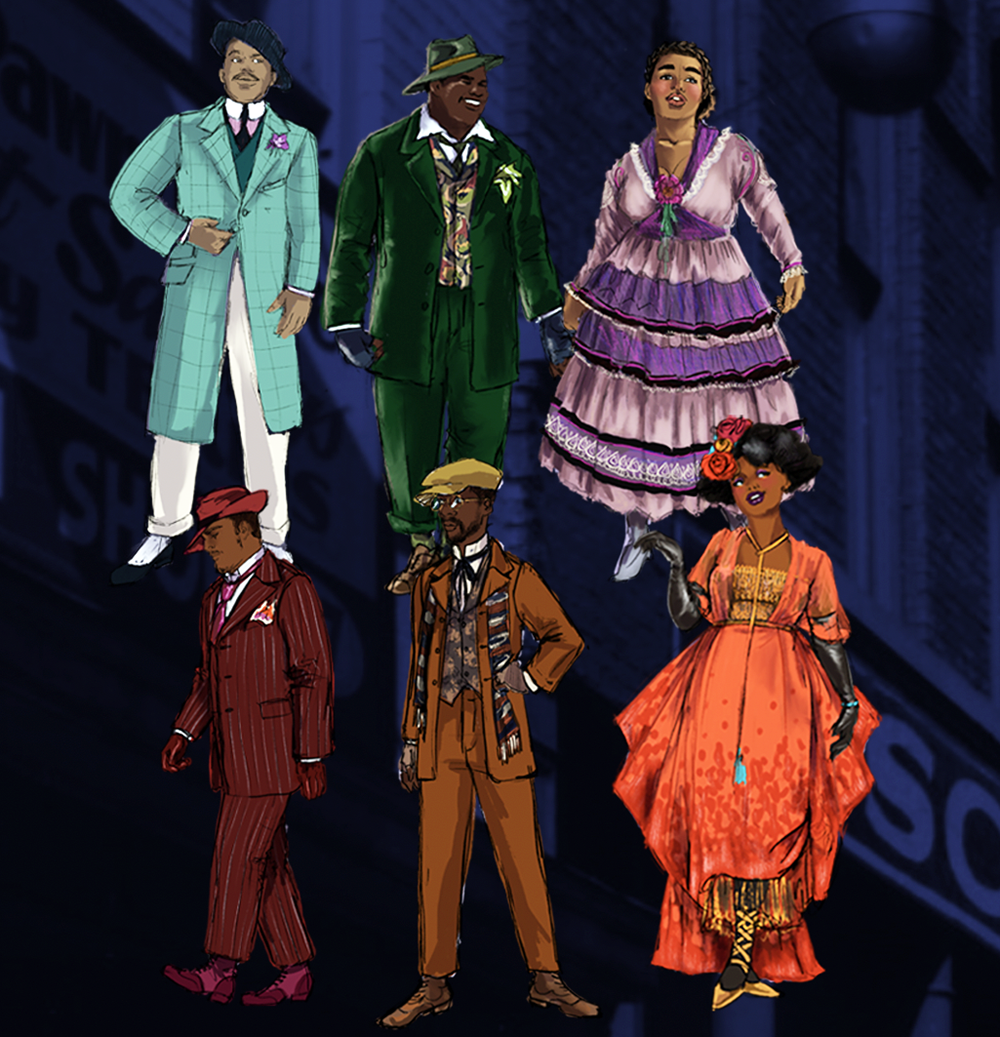If you’re an opera lover, you may think you know La Bohème, Giacomo Puccini’s masterpiece about life in 19th-century Paris. After all, it’s not only one of the most-performed operas in the world, but the most popular work in the 68-year history of Opera Memphis.
Think again.
When Opera Memphis presents its latest version of La Bohème at the Scheidt Family Performing Arts Center this Friday and Saturday, you’d best discard any preconceptions before the curtains rise. For, while the music will be performed as the classic score dictates, complete with the Memphis Symphony Orchestra, the mise-en-scène will be both unfamiliar and, for Memphians, eerily familiar. Rather than being set in bohemian Paris in the 1830s, this version unfolds on Beale Street, circa 1915.

“I wish I could take credit for this inception of it,” says stage director Dennis Whitehead Darling, “but it’s actually the brainchild of [Opera Memphis general director] Ned Canty. It’s been a pet project of his for many years, and the original idea came from a book that Ned read called Beale Street Dynasty.”
Nearly anyone with an interest in our city’s history knows that book well, subtitled Sex, Song, and the Struggle for the Soul of Memphis, wherein Preston Lauterbach vividly evokes the bustling urban milieu, both creative and destructive, that made Beale Street ground zero for Black America in the late 19th and early 20th centuries. “Because Paris in the 1830s was a place where artists and musicians and philosophers and writers came together, it was a cultural center for its time. And the same thing was happening here in Memphis. I think that’s what sparked the idea for setting La Bohème on Beale Street,” says Darling.
Indeed, the similarities between the two cities of different eras were so profound that the original opera slotted neatly into the new setting. “Originally, we were going to write something new, or Ned was, but we moved away from that and have kept most of the original text the same,” says Darling.

As conductor Jeri Lynne Johnson points out, that maintains the integrity of Puccini’s original vision. “Audience members who are fluent in Italian may realize that a couple of things have changed,” she says, “but for the most part, we’ve done this without actually changing the text, which the singers have grown up learning for years and years in the Italian language. Of course, Puccini’s music is so tied to the language, so in order to avoid changing too many actual words, and making sure they stand with the music, there are just a couple of word changes, and some of those are simply within the subtitles.”
Meanwhile, the stage set is similarly subtle. “We’re doing something a little bit more abstract,” says Darling, “using projection screens. It’s minimal but effective. With projections, we’ve layered photos of different buildings and businesses that were part of Beale. Reimagining this in a very minimal way is always challenging, but things that are challenging also allow you to be more creative — oftentimes the things you find challenging are actually opportunities.”
And yet in one regard, there will be plenty of striking visuals, as Darling points out. “We have beautiful costume designs by Jennifer Gillette. That’s been the icing on the cake as we enter tech week because we initially created this show without seeing all of our visual elements. We didn’t have the projections, lighting, or costumes until much later. And it’s always amazing when I see these actors wear their costumes. Another level of character development happens almost immediately, where they just embody these characters, wearing these costumes that Jennifer has designed. They really transform our modern day actors and singers into these period characters.”
The impact of that visual element is deep, as Johnson points out, addressing a whole culture that’s so often rendered invisible. “I’ve done world premieres for the Santa Fe Opera and for the Chicago Opera Theater that had a predominantly African-American casts, having canonical works reimagined with African Americans in the roles. But what makes this particular production so interesting is, it isn’t just the casting, it is really transplanting that bohemian lifestyle into a uniquely Memphian historical period on Beale Street. The setting and the cast together really give you a sense of African-American life at that time. It adds an element of questioning what art is, and who makes art, where moral judgments are embedded into the aesthetic ones.”
